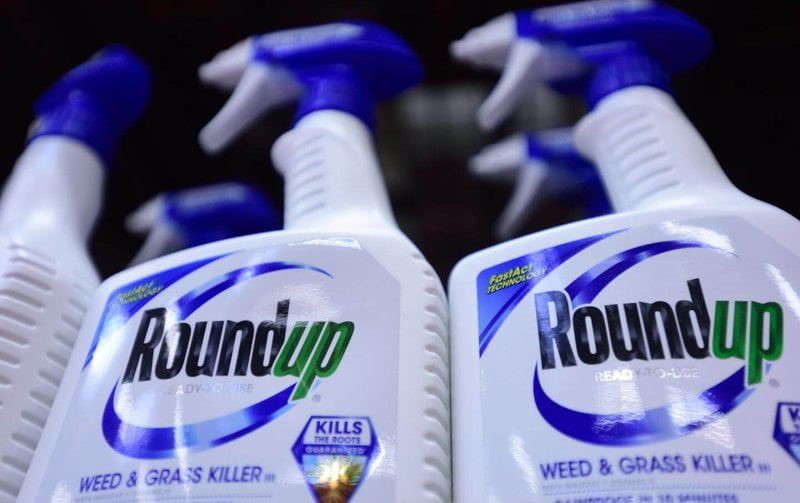Glyphosate weedkiller unlikely to impact ovarian function, studies find
Glyphosate weedkiller unlikely to impact ovarian function, studies find


Exposure to the chemical glyphosate changed the level of some ovarian proteins in mice but did not impact ovarian steroid production, an indication glyphosate may not adversely affect reproduction, according to a new study.
Two studies, published in the peer-reviewed academic journals Toxicology and Applied Pharmacology and Reproductive Toxicology, analyzed how ovarian function in mice responded to various levels of exposure to glyphosate, a chemical extensively used to kill weeds. The research found the highest exposure levels included in the experiments resulted in increased ovarian weight and follicle number, but Aileen Keating, an associate professor of animal science at Iowa State University and lead author, said the research did not uncover evidence that glyphosate affects the healthy functioning of ovaries.
“The big takeaway is that while we did find some changes in ovarian proteins, many of the endpoints we examined were not altered by glyphosate exposure,” Keating said.
Keating, whose research focuses on reproductive health, said it’s unclear if the increased ovarian size or altered protein abundance that resulted from the highest exposure level could cause changes in the ability of mice to reproduce. Answering that question will require further study, she said. The study found glyphosate exposure did not affect heart, liver, spleen, kidney or uterus weights. Keating said the study’s conclusions largely agreed with findings published years ago meant to determine how the chemical can be used safely.
The researchers introduced glyphosate to groups of mice orally, mimicking how humans could be exposed to glyphosate residue in water or in crops used for food production. Groups of mice were exposed to different glyphosate levels and for periods of 5, 10 or 20 weeks. The researchers chose the doses, measured in milligrams per kilogram of bodyweight, to approximate potential glyphosate levels that humans could be exposed to.
However, Keating noted that it remains unclear how much glyphosate humans are exposed to regularly, which made it difficult to judge what levels were appropriate for the experiments. Additionally, they used only the active compound contained in weed treatments, not the additional ingredients.
The use of glyphosate has sparked controversy regarding its proposed health effects. Accordingly, Keating said the researchers designed the study to be as unbiased as possible. For instance, the scientists didn’t know the glyphosate treatment of individual samples as they conducted their analysis, which meant perceived expectations or biases could not affect the results.
“It’s a commonly used chemical, and there’s been some alarm in the media about its use,” she said. “We need more well designed, independent studies to see if this is something we should be concerned about.”
Read the original post

 | Videos | More... |

Video: Nuclear energy will destroy us? Global warming is an existential threat? Chemicals are massacring bees? Donate to the Green Industrial Complex!
 | Bees & Pollinators | More... |

GLP podcast: Science journalism is a mess. Here’s how to fix it

Mosquito massacre: Can we safely tackle malaria with a CRISPR gene drive?

Are we facing an ‘Insect Apocalypse’ caused by ‘intensive, industrial’ farming and agricultural chemicals? The media say yes; Science says ‘no’
 | Infographics | More... |

Infographic: Global regulatory and health research agencies on whether glyphosate causes cancer
 | GMO FAQs | More... |

Why is there controversy over GMO foods but not GMO drugs?

How are GMOs labeled around the world?

How does genetic engineering differ from conventional breeding?
 | GLP Profiles | More... |

Alex Jones: Right-wing conspiracy theorist stokes fear of GMOs, pesticides to sell ‘health supplements’




 California, Washington, Oregon forge immunization alliance to safeguard vaccine access against federal undermining
California, Washington, Oregon forge immunization alliance to safeguard vaccine access against federal undermining Trust issues: What happens when therapists use ChatGPT?
Trust issues: What happens when therapists use ChatGPT? Fighting deforestation with CO2: Biotechnology breakthrough creates sustainable palm oil alternative for cosmetics
Fighting deforestation with CO2: Biotechnology breakthrough creates sustainable palm oil alternative for cosmetics Viewpoint — Fact checking MAHA mythmakers: How wellness influencers and RFK, Jr. undermine American science and health
Viewpoint — Fact checking MAHA mythmakers: How wellness influencers and RFK, Jr. undermine American science and health 30-year-old tomato line shows genetic resistance to devastating virus
30-year-old tomato line shows genetic resistance to devastating virus The free-range chicken dilemma: Better for birds, but with substantial costs
The free-range chicken dilemma: Better for birds, but with substantial costs Viewpoint: Video — Big Solar is gobbling up productive agricultural land and hurting farmers yet providing little energy or sustainabilty gains
Viewpoint: Video — Big Solar is gobbling up productive agricultural land and hurting farmers yet providing little energy or sustainabilty gains ‘You have to treat the brain first’:Rethinking chronic pain with Sanjay Gupta
‘You have to treat the brain first’:Rethinking chronic pain with Sanjay Gupta
